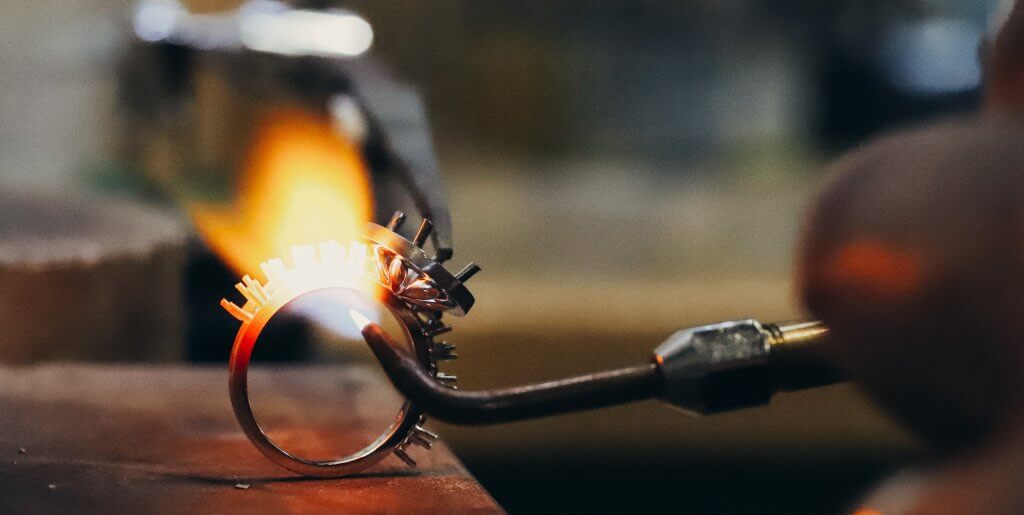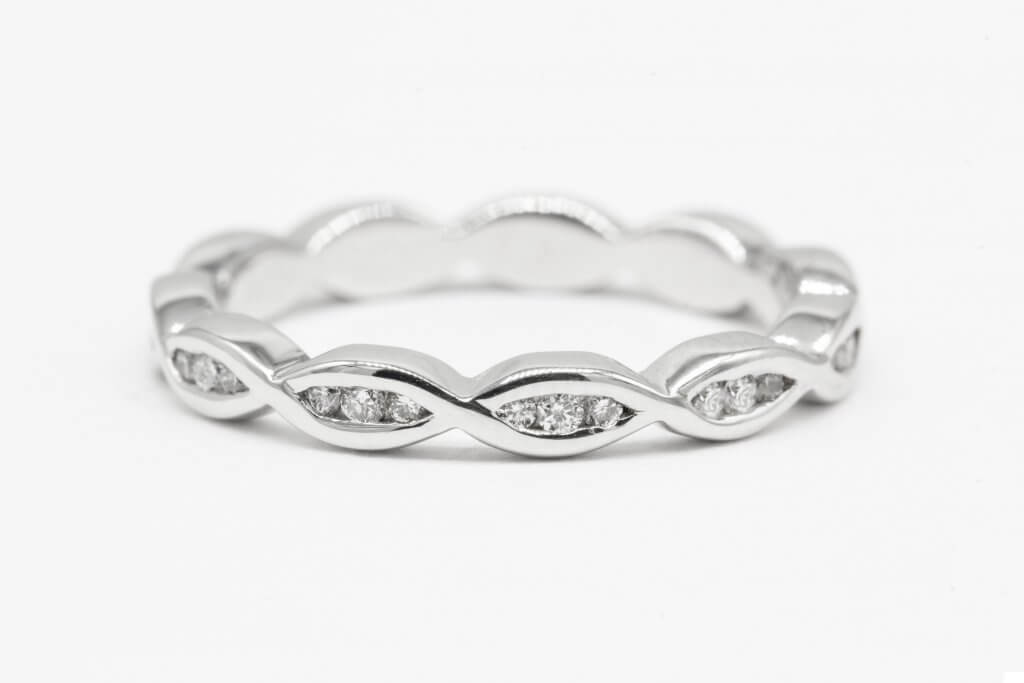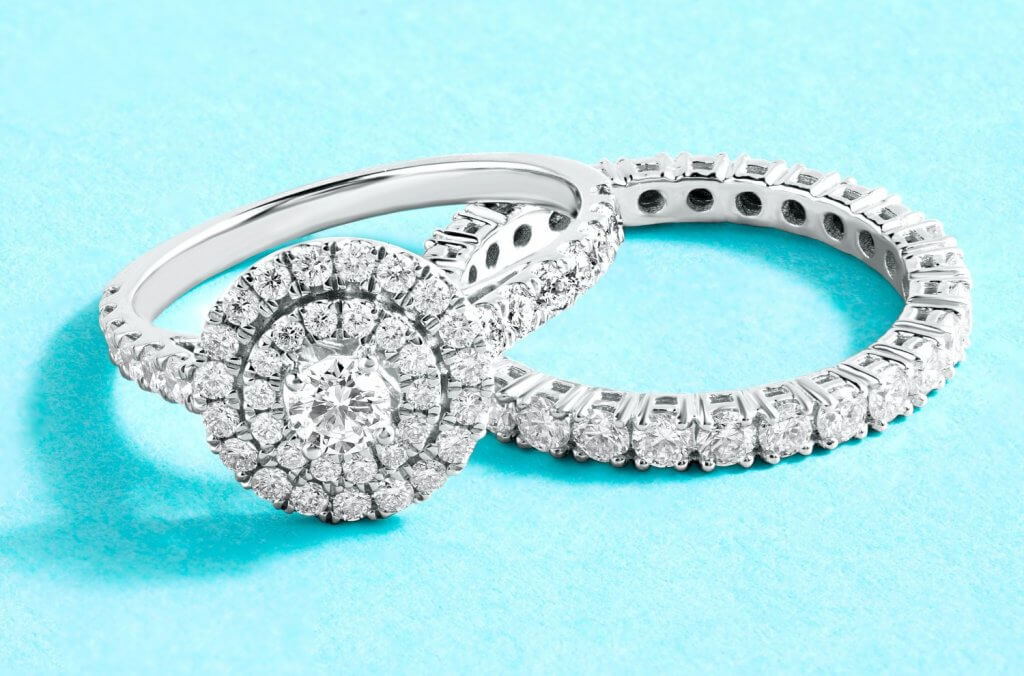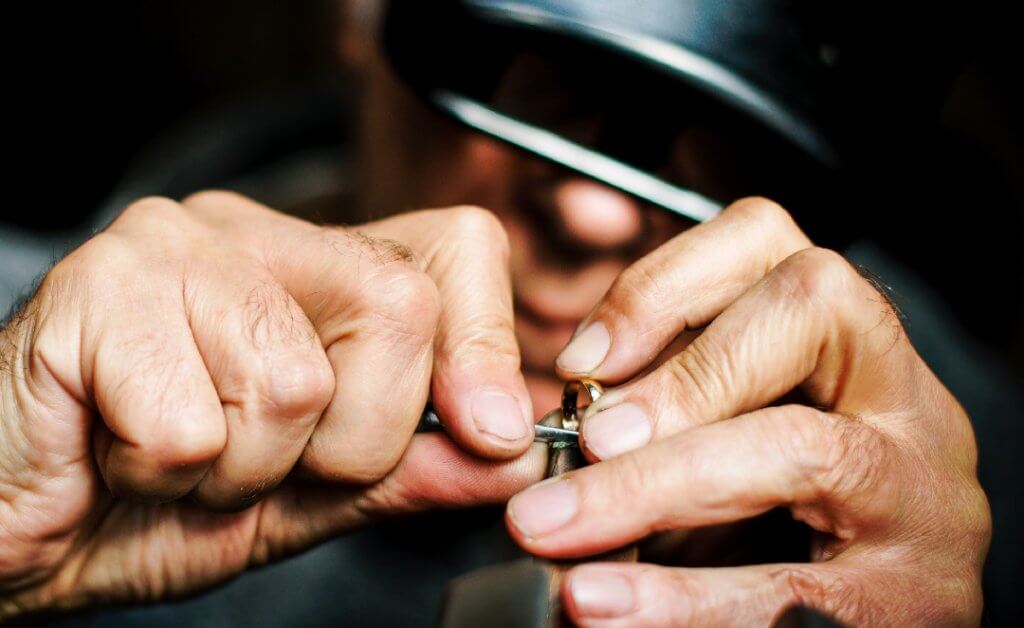Palladium Jewelry: What You Need to Know
Key Takeaways
- Palladium is incredibly rare, and highly sought after not just for jewelry, but for a wide range of other uses, too.
- It’s a lot like platinum, but significantly lighter. It does not tarnish, but will take on a patina with years of wear.
- A lot of jewelers are a lot less adept at working with palladium than they are with platinum or gold. Its rarity means that, generally, you won’t find quite so many options out there.
- It is, however, another strong choice if you’ve got sensitive skin or allergies. Platinum, however, is also a great choice, since it’s used at such a high degree of purity.

We frequently talk about the benefits platinum, a precious metal with a stark, almost-luminescent brightness, for engagement rings and other pieces of bridal jewelry. Its incredible, satin-like finish and celestial luster make it a truly striking choice – and, despite its relative rarity, it is still easy for shoppers across the US to get their hands on, though for a premium price.
Nevertheless, despite the popularity of platinum, there is another metal that shoppers are likely to come across during their search: palladium. In many ways the identical twin of platinum, palladium is significantly stronger than white gold, though not quite as strong (or as weighty) as platinum, it appears to be a pretty solid choice for engagement rings and wedding jewelry.
Still, there are a few factors you ought to consider if you’re tempted by this precious metal – and a couple of compelling reasons to stick with platinum.
What is Palladium?
Palladium is a precious metal, first used in the creation of jewelry in the 1930s. In fact, its main uses tend to lie in some of the less romantic industries – car manufacturing, dentistry, and the creation of surgical equipment, to name just a few.
It is primarily prized for its resemblance to platinum. In fact, even jewelers will struggle to tell the two metals apart right away, since they are so similar in appearance. For some, the lighter weight of palladium is seen as a significant pro – although, for others, this is seen as a con.
The difference between palladium and white gold is far more noticeable, since white gold carries a warmer hue due to the presence of yellow gold within the alloy.
Can Palladium Tarnish?
No, one definitive advantage to palladium is its ability to resist tarnishing – much like platinum.
The metal will develop a patina over time. In both palladium and platinum, this is seen as a positive sign of age and, while it takes away some of the original sheen of the metal, it creates a satin-like quality that can only be achieved through many years’ wear.
Besides, a patina can be easily removed by a jeweler.
What is Palladium Used for in Jewelry?
Palladium is used in the creation of engagement rings, particularly when the buyer wants to create as lightweight a ring as possible, and in wedding bands.
Palladium’s relative popularity is largely down to the fact that, until recently, it was more affordable than platinum.
Platinum is used at a much higher level of purity than white gold – typically more than 95%, compared with the 75% purity of an 18k white gold, or the 58% purity of 14 karat. This means that, despite its lower market value than gold, rings created from platinum are considerably more expensive. For engagement rings in particular, its radiant appearance is often regarded as the perfect complement to a clear diamond, as in the case of this dramatic Marquise Engagement Ring in Platinum.
So, palladium – undeniably similar in appearance – became popular.
However, palladium is considerably rarer than gold and platinum. Its value for other industries means that it is much harder to get a hold of than either of these two precious metals, and its use in jewelry is growing less frequent.
Is Palladium Better Than Gold?
While it holds some advantages over gold, it’s unlikely to ever be considered superior.
First off, palladium can’t rival the warm hues of yellow, rose or even white gold, which is something many shoppers value over the stark whiteness of platinum and palladium.
Secondly, it’s rarer and, as we mentioned above, much harder to track down than gold. As a result, many jewelers have limited experience in dealing with this metal, making it a much more time consuming option.
Finally, there is a social and sentimental significance to gold that many of us would consider irreplaceable. Throughout millennia, gold has been regarded as the most valuable, beautiful, and meaningful of the precious metals, and it holds value that goes far beyond its appearance and durability. Despite the fact that gold is used at a much lower purity in jewelry, there is a certain prestige to saying, ‘It’s made from white gold’ that cannot be replicated when we talk about palladium.
One advantage palladium holds over gold is its ability to be worn by those with allergies to alloy metals like copper and nickel. Since gold has to be alloyed for strength, it can be hard to find an appropriate ring if your partner suffers from allergies.
Then again, platinum is also regarded as an excellent choice for allergy sufferers.

Does Palladium Turn Your Finger Green?
No, since copper is the most usual culprit for turning the skin temporarily green.
This is down to a reaction between your skin’s natural acidity levels and the copper found in some jewelry. Rose gold, for instance, can turn some people’s fingers green – although this does not pose any issue to the wearer’s health.
Palladium jewelry will not be alloyed with copper, since doing so would disrupt the bright sheen shoppers value in this metal.
Is A Palladium Ring Worth Anything?
Yes, in recent years palladium’s rarity has afforded it a similar price tag to platinum.
As a result, if your budget is substantial enough to accommodate this metal, we’d recommend that you opt for platinum instead. Palladium doesn’t pose a significant rival to platinum and, as you might have noticed, tends to match platinum rather than surpass it – both in terms of strength, durability, and beauty.
If your budget is a little more restrictive, then a 14k poses a true rival to palladium. True, it’s lacking the luminescent whiteness of palladium, but this will be most noticeable when you’re comparing the two metals side by side – not when it’s worn on the finger, and reflecting the warmer undertones of the wearer’s skin.
So, yes, palladium is worth a lot to the right buyer – but we’re not convinced that the average shopper looking for an engagement ring really is the right buyer for palladium, and, in most cases, we’d steer our readers toward platinum and white gold instead.

Mar 17, 2022 By Willyou.net
Engagement Ring Statistics You Should Know

Aug 8, 2022 By Willyou.net
Discover the Hottest Gay and Lesbian Engagement Ring Styles








